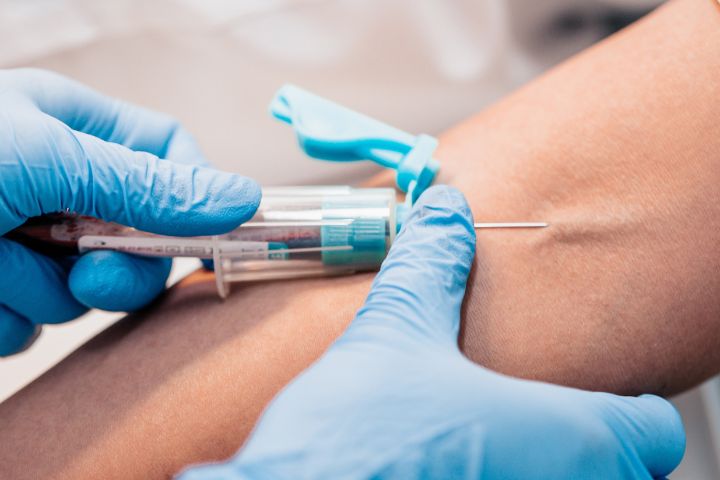Get This Report on Northeast Medical Institute - New Haven Campus Phlebotomy Course & Cna Class
Get This Report on Northeast Medical Institute - New Haven Campus Phlebotomy Course & Cna Class
Blog Article
The Definitive Guide to Northeast Medical Institute - New Haven Campus Phlebotomy Course & Cna Class
Table of Contents4 Easy Facts About Northeast Medical Institute - New Haven Campus Phlebotomy Course & Cna Class Shown9 Simple Techniques For Northeast Medical Institute - New Haven Campus Phlebotomy Course & Cna ClassThe Basic Principles Of Northeast Medical Institute - New Haven Campus Phlebotomy Course & Cna Class Not known Details About Northeast Medical Institute - New Haven Campus Phlebotomy Course & Cna Class Northeast Medical Institute - New Haven Campus Phlebotomy Course & Cna Class Things To Know Before You Get ThisThe 5-Second Trick For Northeast Medical Institute - New Haven Campus Phlebotomy Course & Cna Class
The use of such tools must be come with by various other infection prevention and control methods, and training in their use.For settings with low sources, expense is a driving consider purchase of safety-engineered gadgets - CNA Training. Where safety-engineered tools are not readily available, competent usage of a needle and syringe serves. Accidental direct exposure and specific info concerning an event ought to be videotaped in a register. Support solutions ought to be advertised for those that undergo unintended direct exposure.
labelling); transportation problems; analysis of outcomes for scientific monitoring. In an outpatient department or facility, supply a specialized phlebotomy cubicle containing: a clean surface with two chairs (one for the phlebotomist and the other for the person); a hand clean container with soap, running water and paper towels; alcohol hand rub. In the blood-sampling space for an outpatient department or center, supply a comfortable reclining sofa with an arm rest.
Some Known Facts About Northeast Medical Institute - New Haven Campus Phlebotomy Course & Cna Class.
Guarantee that the indications for blood tasting are clearly specified, either in a composed procedure or in documented guidelines (e.g. in a laboratory type). Gather all the tools needed for the treatment and place it within risk-free and very easy reach on a tray or cart, making sure that all the things are clearly noticeable.
Where the patient is grown-up and aware, follow the actions laid out below. Introduce yourself to the client, and ask the patient to specify their complete name. Check that the laboratory form matches the person's identification (i.e. match the individual's information with the lab form, to ensure accurate recognition). Ask whether the patent has allergies, phobias or has ever before collapsed during previous injections or blood attracts.
Make the individual comfy in a supine position (when possible). Location a tidy paper or towel under the patient's arm. Talk about the examination to be carried out (see Annex F) and get verbal consent. The patient has a right to reject a test any time prior to the blood tasting, so it is necessary to guarantee that the patient has actually recognized the procedure.
Things about Northeast Medical Institute - New Haven Campus Phlebotomy Course & Cna Class
Extend the individual's arm and evaluate the antecubital fossa or forearm. Find a blood vessel of an excellent dimension that is noticeable, straight and clear.
DO NOT insert the needle where blood vessels are drawing away, since this boosts the possibility of a haematoma. Finding the vein will help in determining the appropriate size of needle.
Samplings from main lines lug a danger of contamination or wrong laboratory examination results. It is appropriate, however not perfect, to attract blood specimens when initial introducing an in-dwelling venous gadget, before attaching the cannula to the intravenous fluids.
Northeast Medical Institute - New Haven Campus Phlebotomy Course & Cna Class Fundamentals Explained
Failure to permit sufficient contact time increases the risk of contamination. DO NOT touch the cleaned up site; in specific, DO NOT place a finger over the blood vessel to lead the shaft of the exposed needle.
Ask the individual to create a clenched fist so the blood vessels are more famous. Go into the blood vessel promptly at a 30 level angle or much less, and proceed to introduce the needle along the vein at the easiest angle of entry - CNA Training. When sufficient blood has actually been collected, release the tourniquet prior to taking out the needle
Rumored Buzz on Northeast Medical Institute - New Haven Campus Phlebotomy Course & Cna Class
Take out the needle carefully and apply mild stress to the website with a tidy gauze or completely dry cotton-wool ball. Ask the person to hold the gauze or cotton woollen in location, with the arm prolonged and increased. Ask the client NOT to flex the arm, because doing so triggers a haematoma.

The Ultimate Guide To Northeast Medical Institute - New Haven Campus Phlebotomy Course & Cna Class
Do not press the syringe bettor because added stress raises the risk of haemolysis. Where possible, keep televisions in a shelf and move the shelf in the direction of you. Infuse downwards into the proper coloured stopper. DO NOT eliminate the stopper since it will launch the vacuum cleaner. If the example tube does not have a rubber stopper, infuse exceptionally gradually view it into the tube as lessening the stress and speed utilized to transfer the sampling lowers the danger of haemolysis.

Report this page